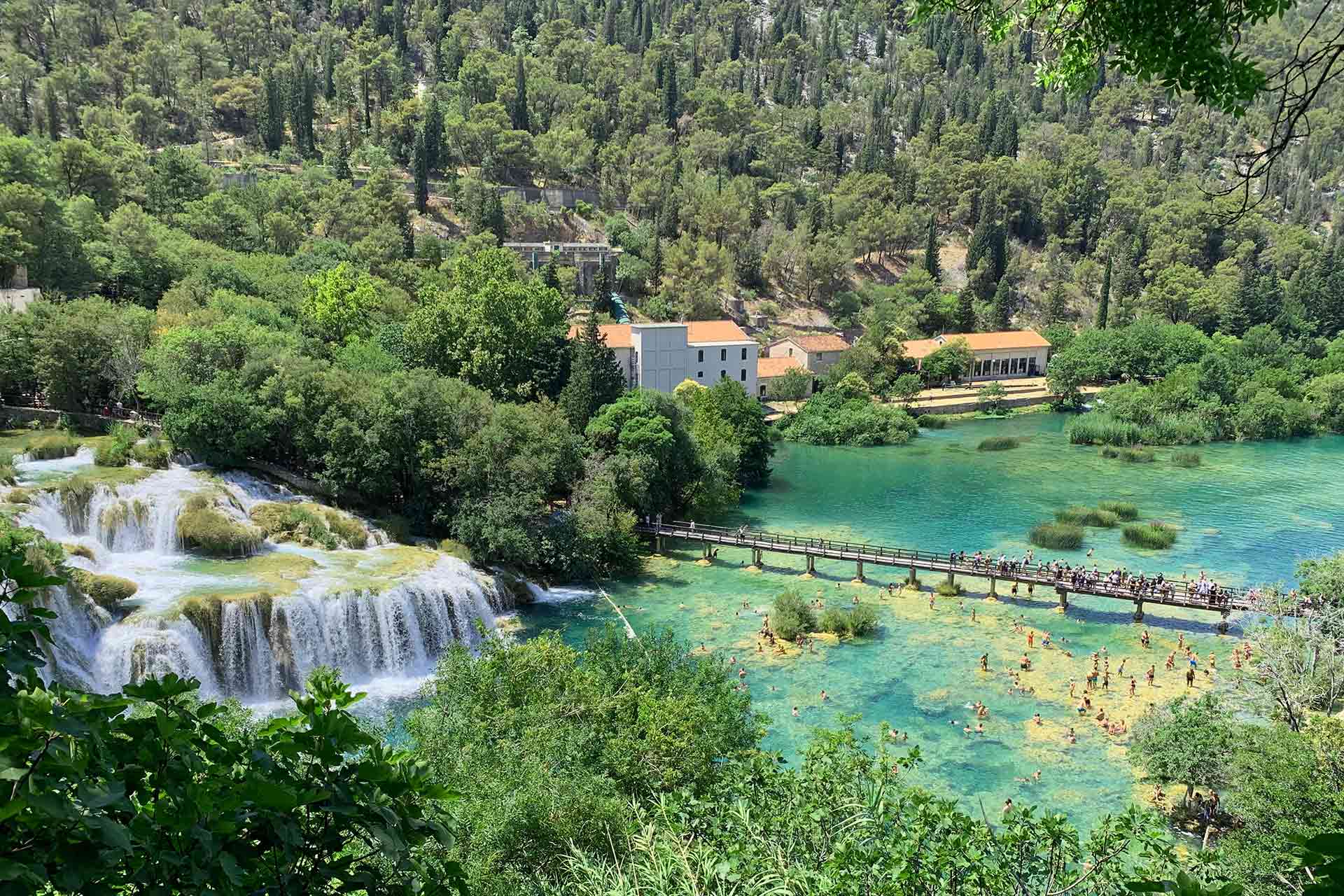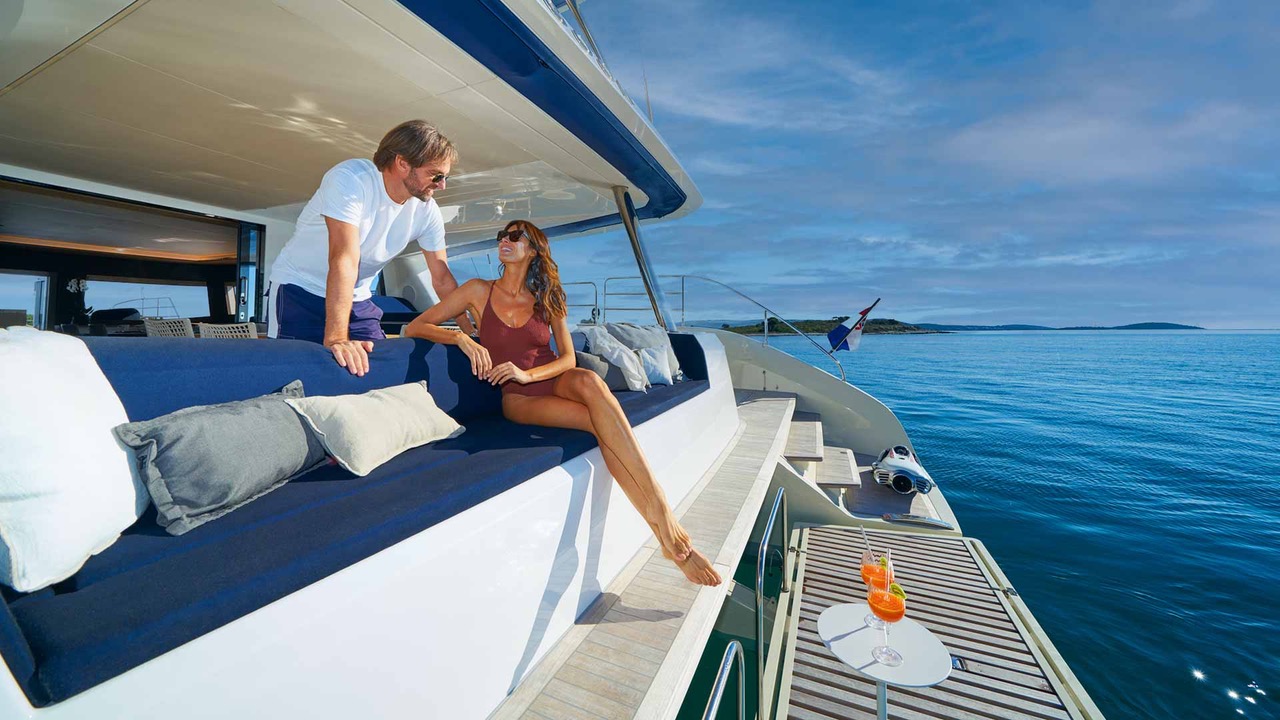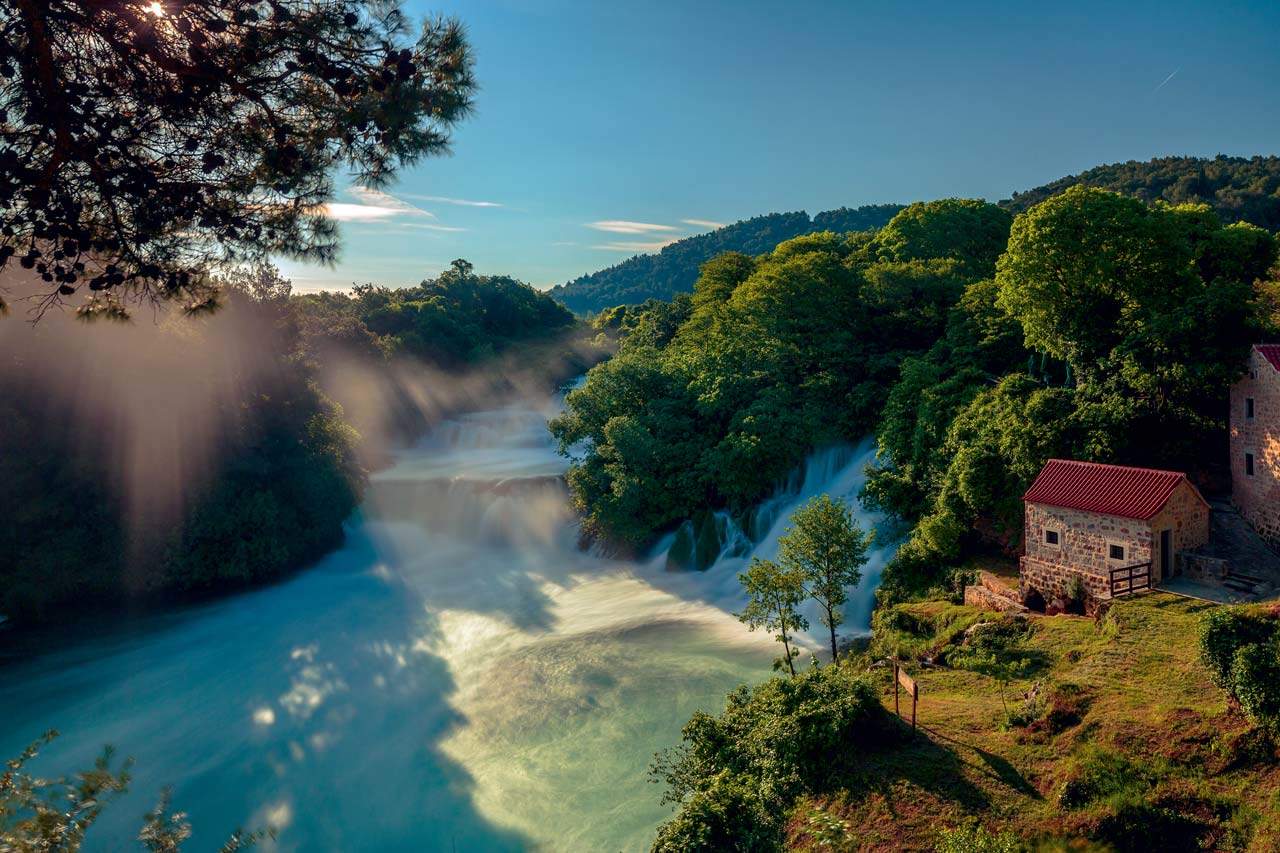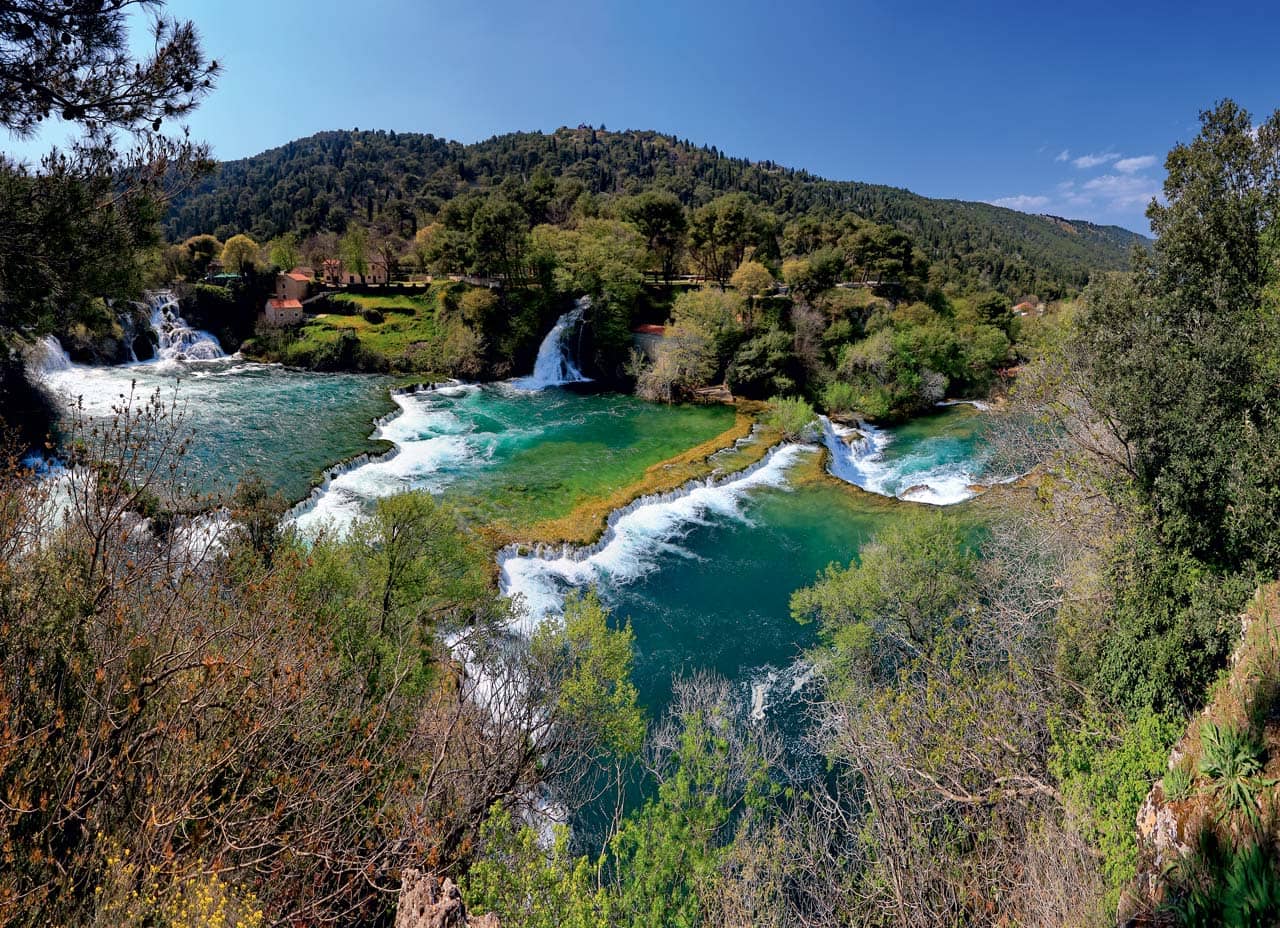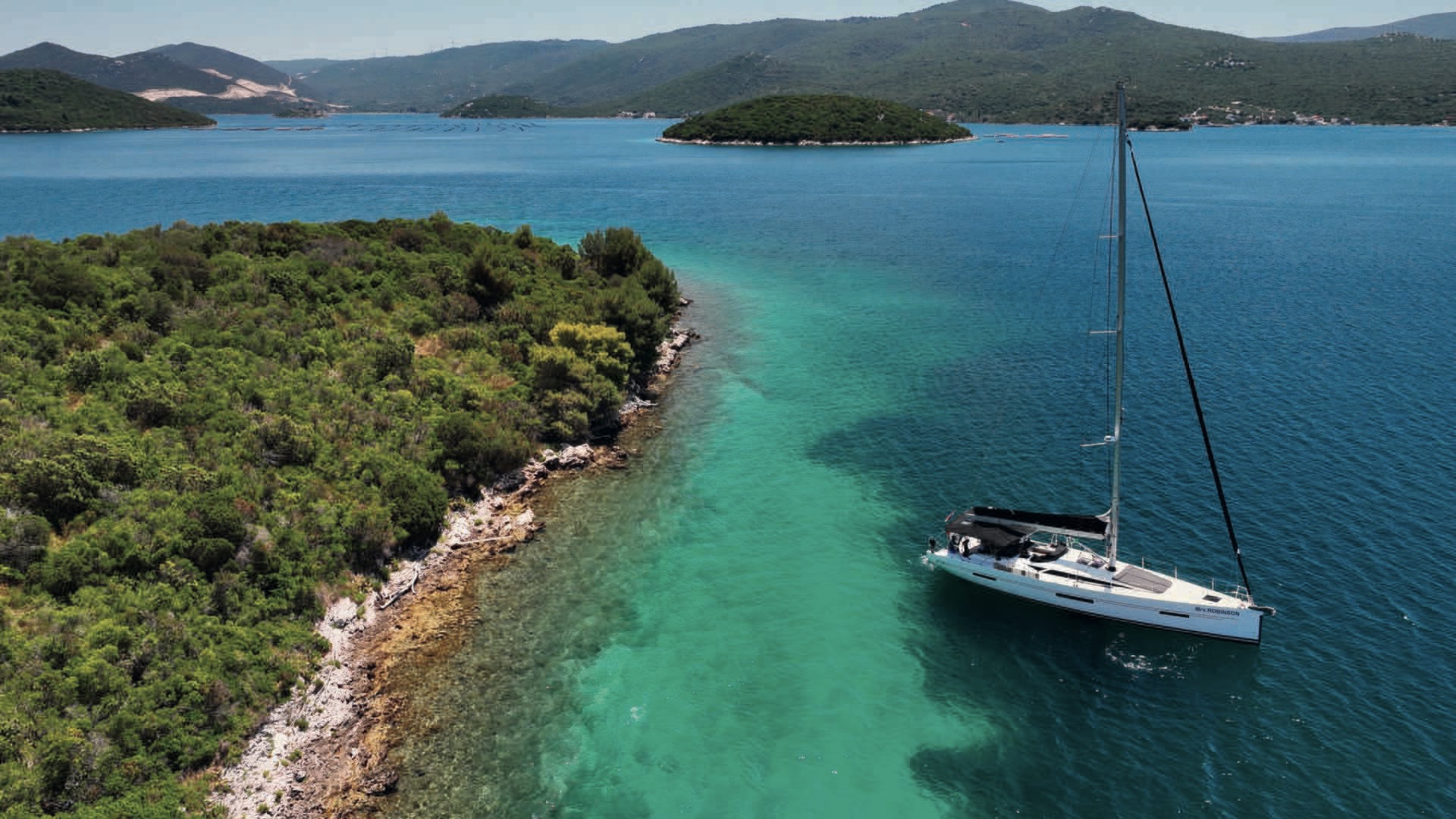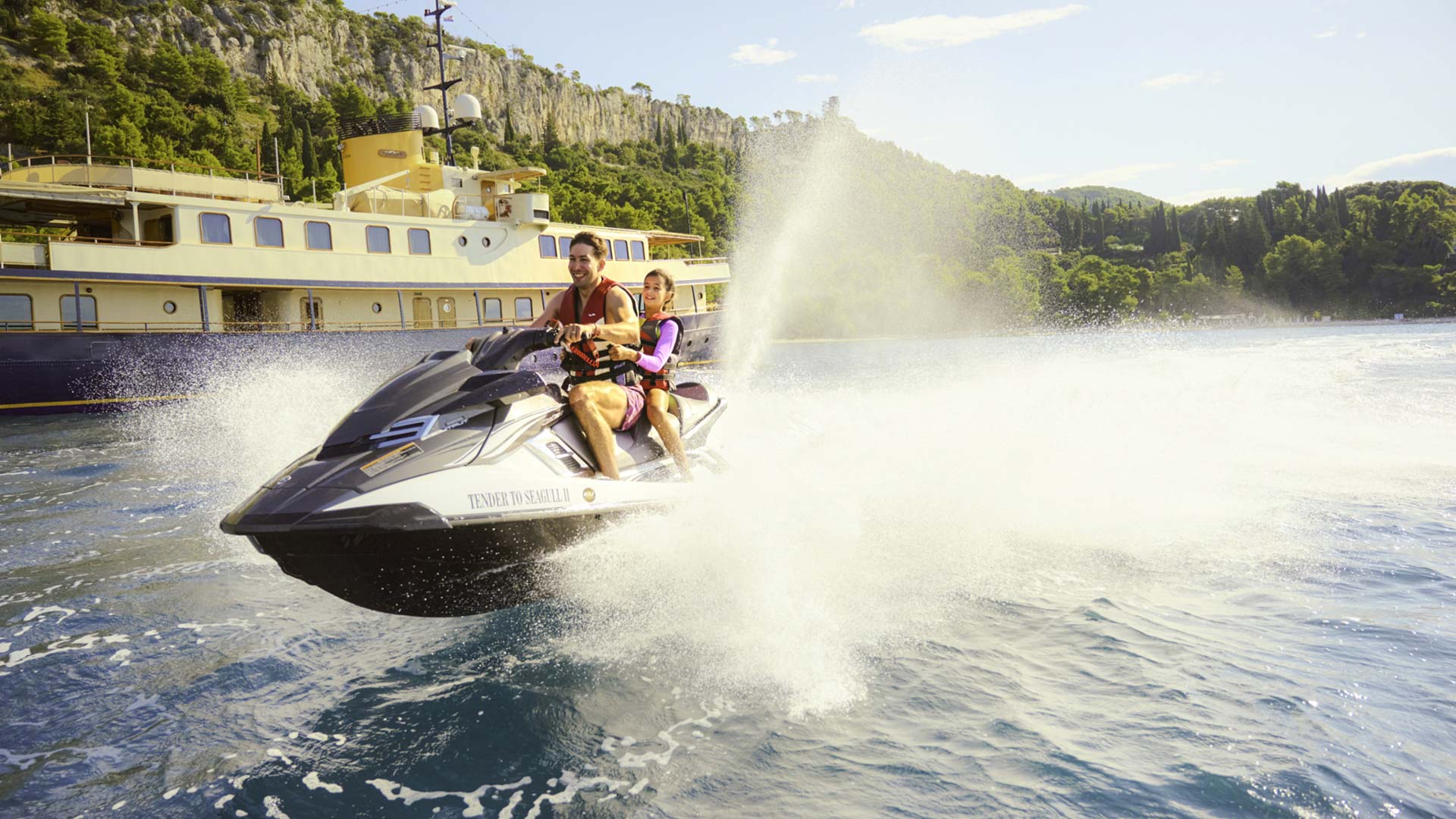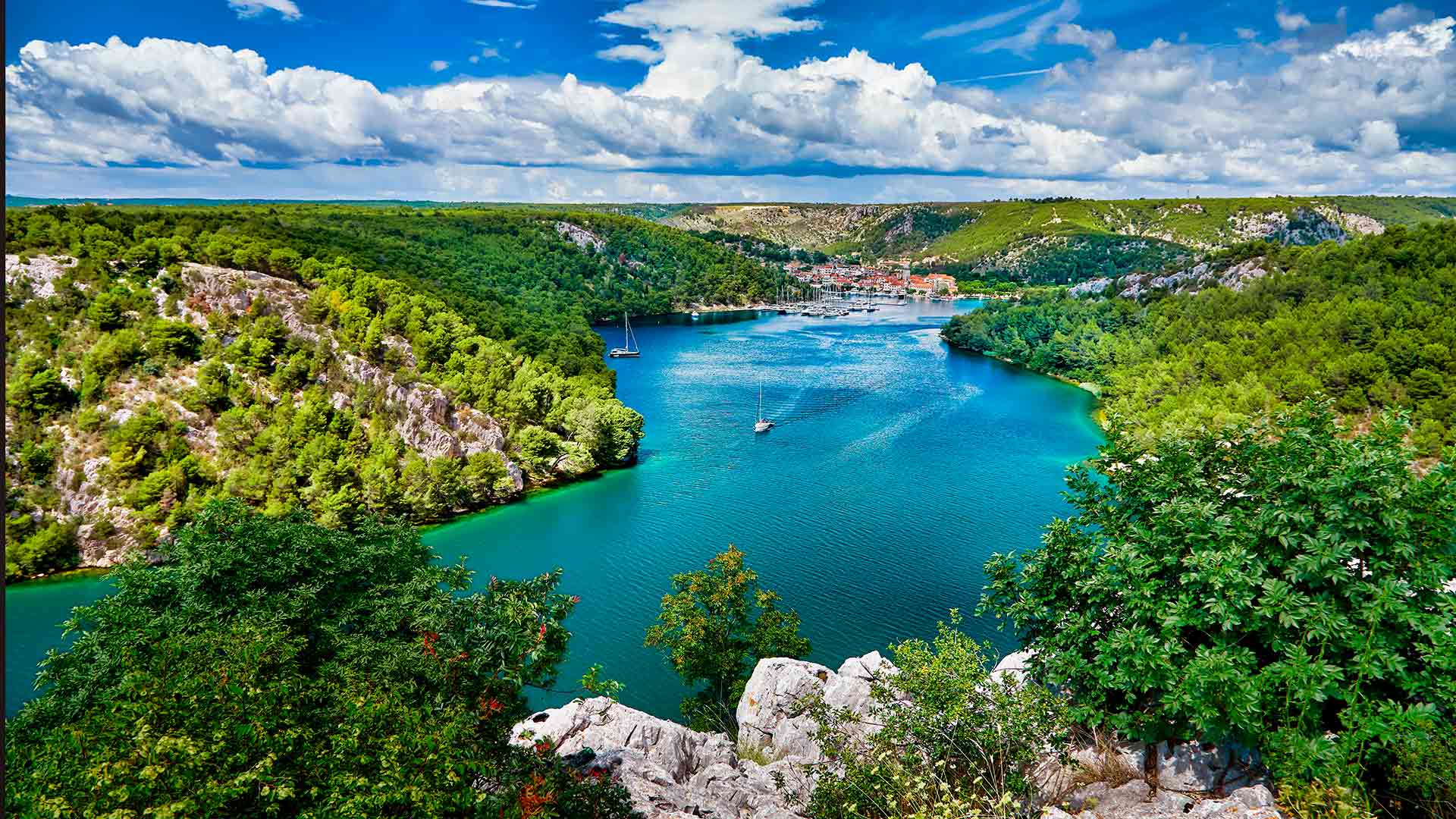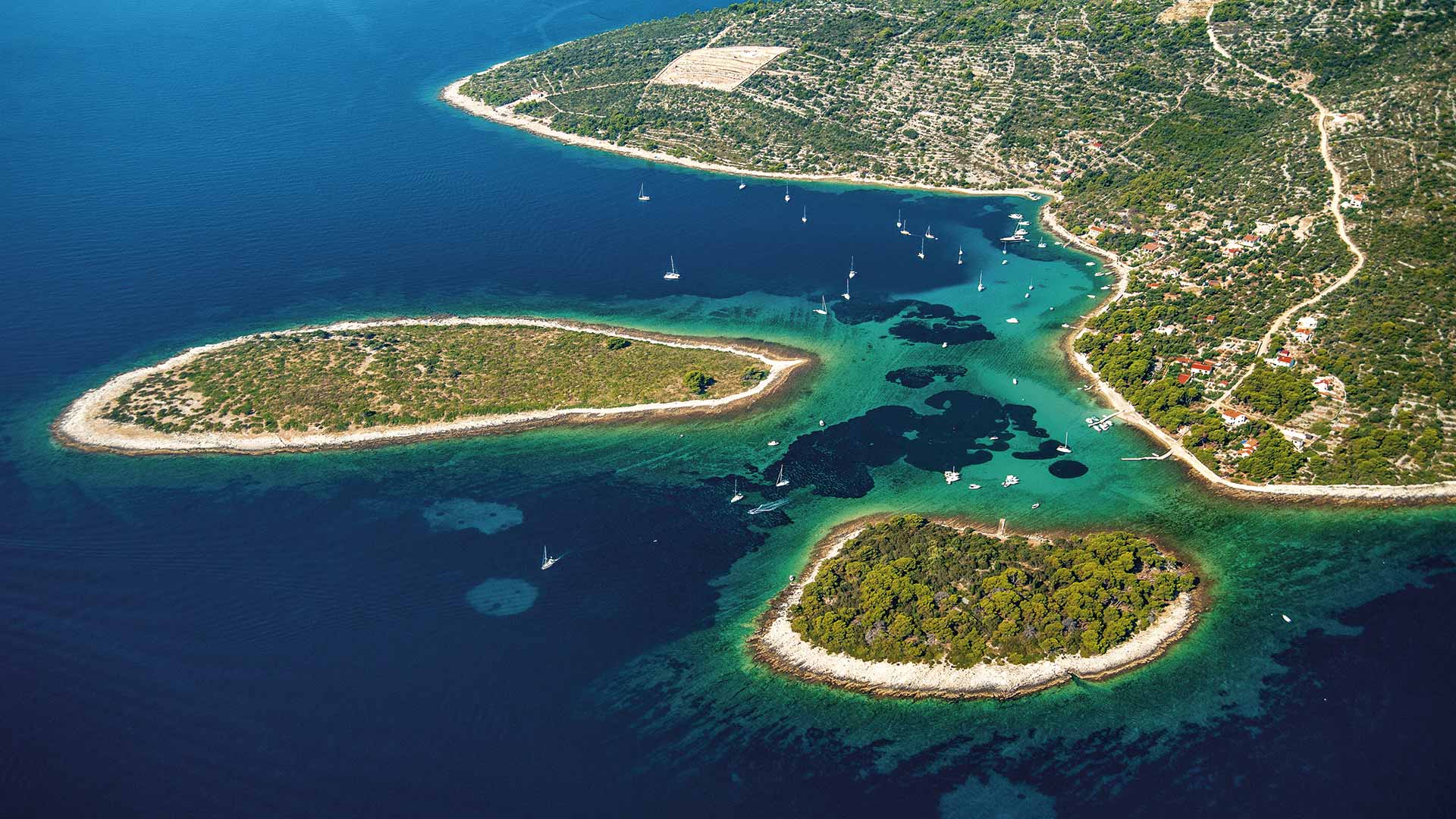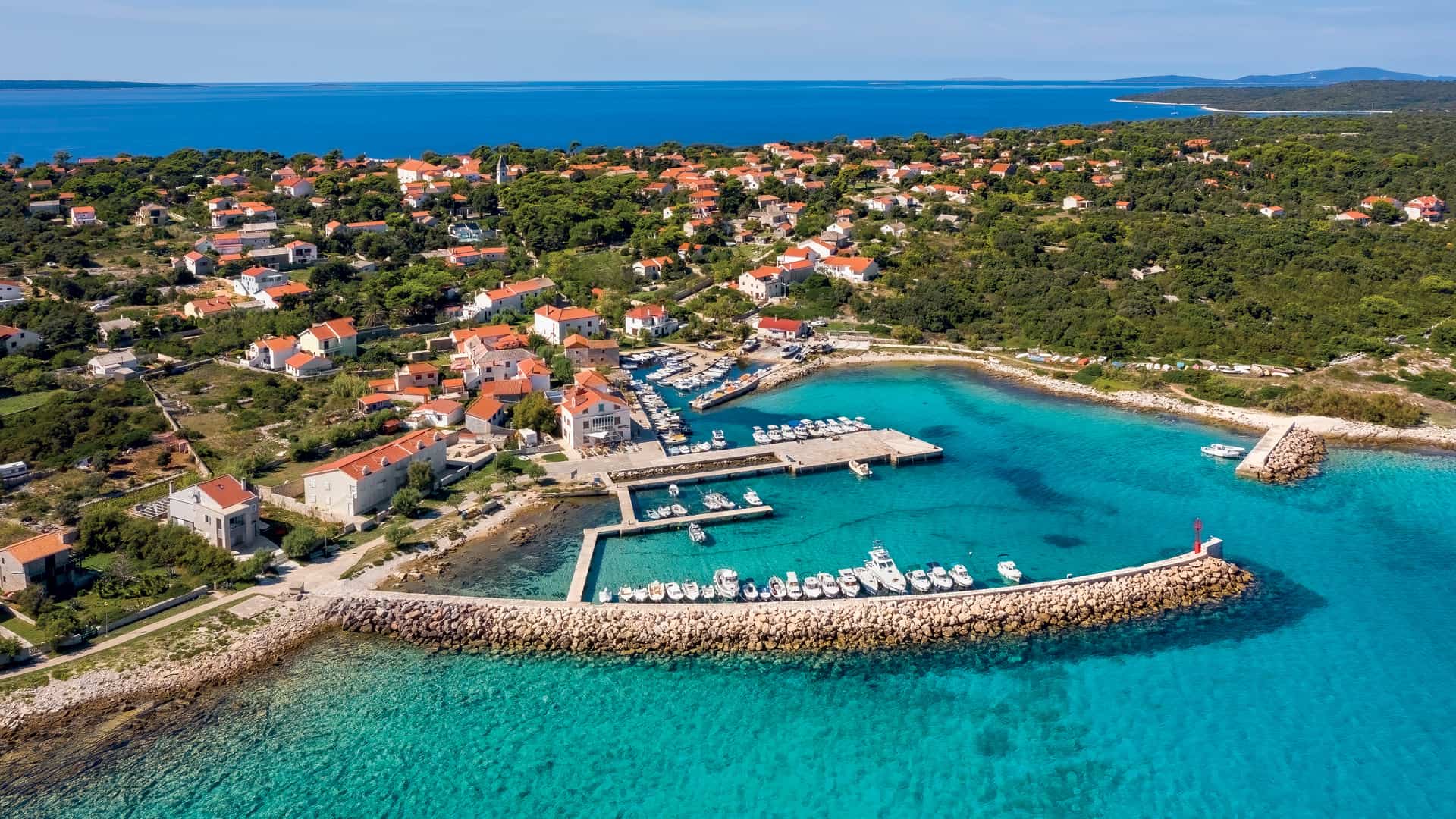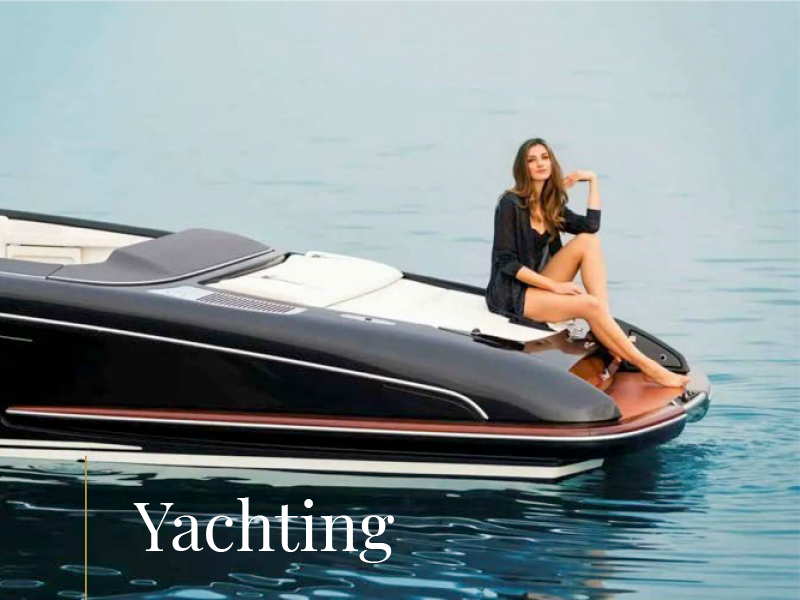The Krka National Park is located on the most beautiful part of the Krka River, where, breaking its way from the source to the mouth, it forms cascades, lakes, and waterfalls, places of exceptional natural beauty that attract numerous visitors, including yachtsmen
Natural wonder of Krka has always been appealing, thus today it stands for one of the most visited tourist attractions on the Croatian coast. Located in the heart of the Šibenik-Knin county, the Krka National Park, featuring surface of 109 km2, spreads across the fabulous area of the Krka River and lower course of the Čikola River. Due to its extraordinary geomorphologic, hydrological and landscaping peculiarities it was declared a national park in 1985.
Why visit the colorful Krka National Park?
The area represents exceptional and multiplex natural values, and encompasses one or more preserved or slightly changed ecosystems. This green-zone meets scientific, cultural, educational and recreative purposes, and we find it interesting due to a large number of visitors and yachtsmen setting it in their itinerary.
The fundamental phenomena of this National Park is calc-tufa, limestone formed by stored water, that has developed along the entire river course, seven breath-taking calc-tufa waterfalls – Bilušića Buk, Brljan Falls, Manojlovački Falls, Rošnjak Falls, Miljacka Falls, Roški Falls and the most famous Skradinski Buk.

Skradinski Buk, the most visited location in the national park
Fascination with Skradinski Buk lies not only in his mesmerizing beauty, but also in the fact it is only four kilometres away from Skradin and the boat ride to the waterfall is one of the most fabulous experiences in this part of the Adriatic. Krka is home to a diverse and picturesque flora world encompassing 1.022 species, while the fauna embraces plentiful endemic, rare and endangered species. The lake zones of the river course host spiritual locations: Visovac island and Krka Monastery.
A few Old-Croatian fortresses from the 14th ct. are situated along Krka, as well as hundreds of caves and pits. The National park is open for visitors year-round, and it can be experienced by water or land, via cycling trails, or ten educational walking trails. Skradinski Buk is the longest, the most famous and the most visited waterfall on the Krka River, and one of the most famous natural beauties of Croatia.
The waterfall consists of calc-tufa barriers, islands and lakes, a network of trails and bridges with watermills and ethnographic collection enabling insight in the commercial past of Šibenik and the entire region. One can also witness the remaining of the Krka hydroelectric power plant that started working exactly two days after Tesla’s hydroelectric power plant on the Niagara Waterfalls back in 1895.
Reconstructed mills bear witness of the harnessed water power and exploitation. Some mills serve as souvenir shops, other serve the purpose of ethnographic exhibitions, and during the summer season employees of the National Park demonstrate the ways these mills were used for grinding and washing the laundry.
Visit the island of Visovac and the Roški waterfall
Skradinski Buk is an excellent starting point for boat trips to the Visovac island and Roški Falls. Until recently, swimming under the Skradinski Buk was allowed in the summer, which provided an exceptional experience of frolicking in the fresh water of fascinating waterfalls and an energizing salt and fresh water experience for the skin. Should you place your heart on sailing downwards on the Krka NP boat, do not miss out on Visovac.
That island is one of the most important natural and cultural values of the Republic of Croatia; ever since 1445 it has hosted the Franciscan monastery with church of Our Lay in floristic-horticultural landscaping monument. The Monastery collection holds various artworks, valuable documents, books and incunabulum.
Since Visovac is an island in the midst of a calm, lake-zone of the river, it can be reached only by boat. This green heaven offers trips to Visovac and Roški Falls, and for those yearning for more peaceful ambience away from the mass of tourists another possibility is prearranging a rent-a-boat with a guide.
Upper river course offers Roški Slap, spacious waterfalls area consisting mainly of the central falls, many armlets, cascades (known as Necklaces) and calc-tufa islands. This region is rich with watermills speaking of the traditional life and economy style till the first half of the 20.ct, belonging also to precious ethnographic monuments of Dalmatia and Croatia. The starting point of the barrier encompasses an array of Necklaces followed by many armlets and islets.

Seven magnificent travertine waterfalls of the Krka River
One part of the waterfall is visible only from a boat, and the rest of the Necklaces can be admired via walking trails. 517 wooden stairs lead from the Necklaces towards Oziđana pećina-cave. A road originating from the Roman times crosses the calc-tufa waterfalls. The largest part of the Roški Fall means intact nature launching it as a site valuable to nature enthusiasts.
The left side of the waterfalls bank embraces rustic mills with some of these still serving the original purpose. Oziđana pećina-cave belongs to the educational Stinice – Roški Fall – Oziđana pećina walking trail, a site of extraordinary archaeological, natural, cultural and historical value. Humans inhabited this spot from 5000 till 1500 BC, yet today the cave exhibits archaeological collection in situ.

Krka National Park is a significant attraction for Croatian tourism
Archaeological research confirmed the presence of all Neolithical cultures on the Adriatic area (impresso, Danilo and Hvar culture), Eneolithic, Early and Middle Bronze Age. Krka Monastery of the Holy Archangel is one of the most significant spiritual centres of the Orthodox Eparchy of Dalmatia with headquarters in Šibenik.
It is located in Carigradska draga, in the middle of the Krka River canyon and built on the foundations of the older eremitic monastery. The Byzantine style church hides underneath old Roman catacombs open to the visitors.
Upstream area off the Krka Monastery cherishes the remaining of the old Roman military camp Burnum, located just above the Manojlovac Falls, the highest waterfall on the Krka River. Manojlovac Falls is the third, the highest and according to many the most beautiful waterfall of the Krka River, yet tourists reach it rarely. It consists of layers of calc-tufa barriers of the total height of 59,6 m. The tallest barrier is 32,2 meters high.
Canyon surrounding the waterfall is covered with submediterranean greenery, small fields and pasture grounds stretching across the surrounding area of the river course. During the rainy season the waterfalls gush powerfully down into the depth enveloped in a veil of rainbow-coloured drops.
Whether you wish to enjoy the colourful waterfalls, have a swim in the warm river or just visit this stunning green-zone, we suggest you to take your time and tour the entire National Park providing adventure-packed experience easily reachable by boat.
Photos Pexels, Pixabay, Unsplash / Cas Teunissen, Alex Meier, Sutterstock, Boris Kačan, Mario Romulić, Ivo Pervan, Goran Šafarek & Denis Peroš
Video Krka National Park
